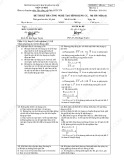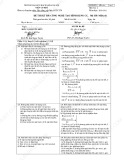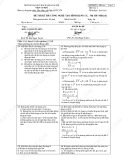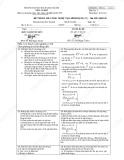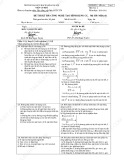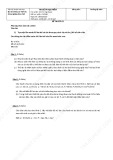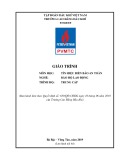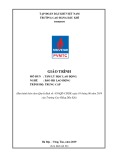
http://www.iaeme.com/IJMET/index.asp 994 editor@iaeme.com
International Journal of Mechanical Engineering and Technology (IJMET)
Volume 10, Issue 03, March 2019, pp. 994-1000. Article ID: IJMET_10_03_100
Available online at http://www.iaeme.com/ijmet/issues.asp?JType=IJMET&VType=10&IType=3
ISSN Print: 0976-6340 and ISSN Online: 0976-6359
© IAEME Publication Scopus Indexed
EFFECT OF HOT-SPOTTED CELL ON PV
MODULE PERFORMANCE
Najib Hamisu Umar*
Sharda University, Greater Noida (NCR, Delhi) - 201306, India
Birinchi Bora and Chandan Banerjee
National Institute of Solar Energy, Gurugram, India
*corresponding author
ABSTRACT
In this paper, the effects of the hot-spotted cell on PV module were evaluated. The
experimental observation was based on 100 kW PV array composed of 20 PV modules.
It was found that an increasing number of hot-spotted solar cells in a PV module would
likely increase its output power loss. It was also noticed that most of the PV modules
affected by hot-spotted PV string are relatively affected by high-temperature levels,
dust, and Partial shading due to trees or tall vegetation. Furthermore, the average
performance ratio (PR) and degradation rate (DR) of all examined PV modules were
analyzed. PR was observed to have a higher value of 0.78 in a non-hot-spotted PV array,
whereas low PR of 0.65 was observed in a hot-spotted PV array. High DR of 3.13/year
was observed in hot-spotted PV array; while low DR of 1.48/year was found in a module
with no hot-spot. It was evident that the mean PR is significantly reduced due to the
existence of hot-spots in the PV modules. DR was also increased due to hot-spot in the
PV array. Hence, it is important to select materials that have the highest thermal
stability to avoid mild hot spot situations that will lead to immediate damage of the
panel. Hot-spot study analysis will help increase PV lifetime power output by detecting
and preventing hot spotting before it permanently damages the PV panel.
Keyword: Photovoltaic system, Hot-spot, Performance ratio, Degradation rate,
Module defects, PV module
Cite this Article Najib Hamisu Umar, Birinchi Bora and Chandan Banerjee, Effect of
Hot-Spotted Cell on Pv Module Performance, International Journal of Mechanical
Engineering and Technology, 10(3), 2019, pp. 994-1000.
http://www.iaeme.com/IJMET/issues.asp?JType=IJMET&VType=10&IType=3
1. INTRODUCTION
In recent years, the deployment of photovoltaic (PV) system has increased significantly due to
its availability and cleanliness. Hence it is essential to conduct accurate studies on degradation






